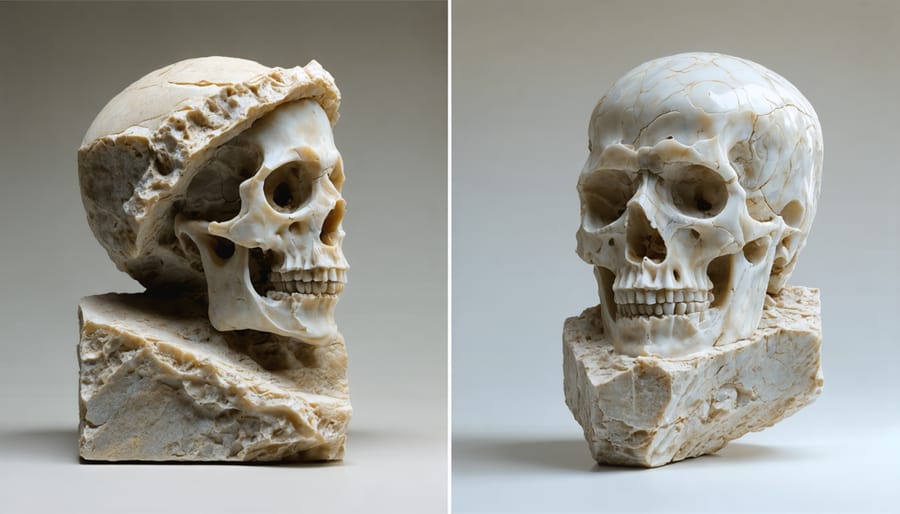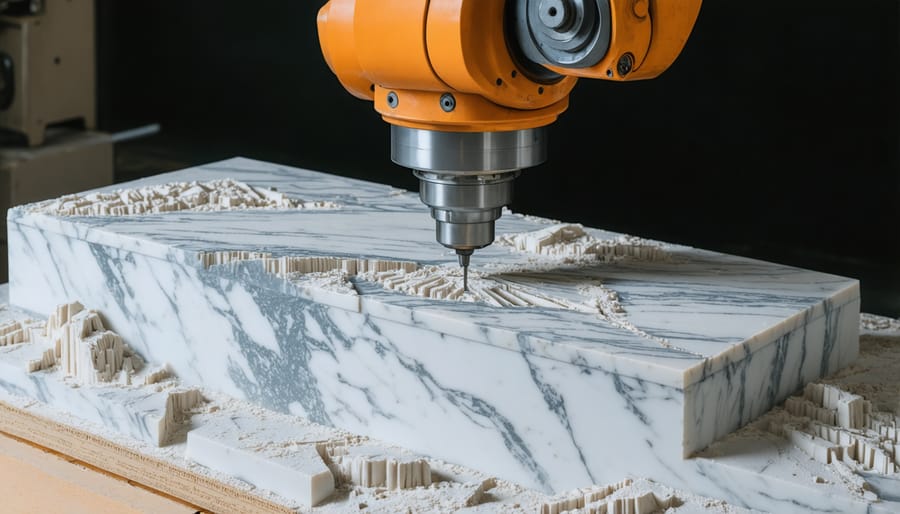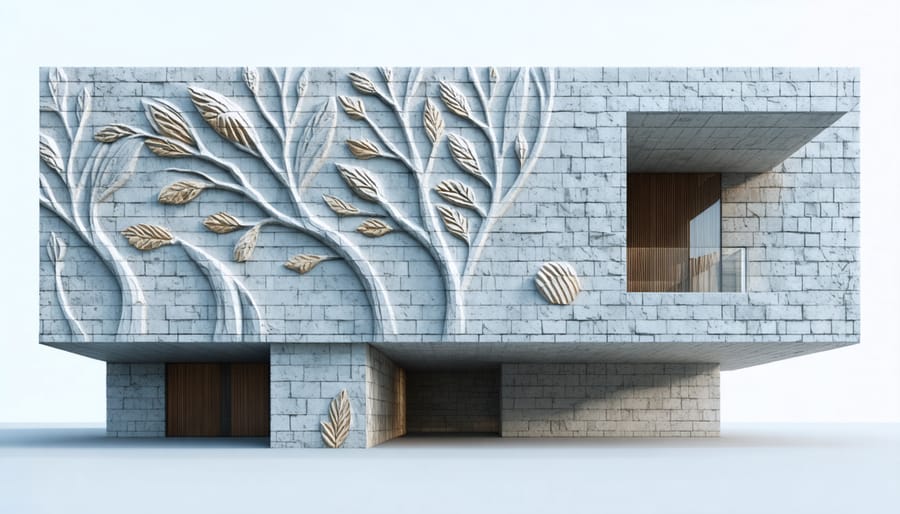At the intersection of ancient artistry and cutting-edge technology, the Digital Stone Project revolutionizes how we shape, sculpt, and reimagine stone in the modern era. This groundbreaking initiative merges traditional stone craftsmanship with advanced digital fabrication techniques, enabling artists and architects to push the boundaries of what’s possible with this timeless material.
Through robotically-controlled cutting tools, 3D scanning technology, and sophisticated computer modeling, creators can now transform raw stone into precisely engineered forms that were previously impossible to achieve by hand. This marriage of classical medium and contemporary innovation has opened new frontiers in architectural design, sculptural art, and cultural preservation.
Since its inception, the Digital Stone Project has fostered collaboration between master craftsmen, technology pioneers, and creative visionaries worldwide. By democratizing access to advanced stone-working capabilities, it’s not just preserving an ancient craft – it’s catalyzing its evolution into the digital age. From intricate architectural elements to complex sculptural works, this technological renaissance in stone crafting is redefining the possibilities of one of humanity’s oldest building materials.
The Evolution of Stone Sculpting Technology
From Hand Tools to Digital Interfaces
The evolution from hand tools to digital interfaces represents a remarkable transformation in stone crafting. While preserving traditional stone craftsmanship remains crucial, modern technology has revolutionized how artisans approach their work. Computer-aided design (CAD) software now allows craftspeople to visualize and plan intricate designs before touching the stone, significantly reducing material waste and improving precision.
Digital measuring tools and 3D scanning technology have replaced manual templates and measuring techniques, offering unprecedented accuracy in both new projects and modern stone restoration techniques. CNC machines have transformed the cutting and shaping process, executing complex designs with consistent quality that would take master craftsmen countless hours to achieve by hand.
This technological integration hasn’t replaced traditional skills but rather enhanced them, creating a hybrid approach where ancient knowledge meets digital innovation. Today’s stone artisans combine centuries-old techniques with cutting-edge tools, resulting in works that honor historical methods while embracing modern capabilities.

Key Technologies in Digital Stone Processing
Modern digital stone processing combines traditional craftsmanship with cutting-edge technology. At the forefront are Computer Numerical Control (CNC) machines, which use precise robotic arms equipped with diamond-tipped tools to carve intricate designs into stone. These machines can execute complex three-dimensional cuts with accuracy down to fractions of a millimeter.
3D scanning technology plays a crucial role, allowing artists and fabricators to create detailed digital models of existing objects or new designs. These scans can be manipulated using Computer-Aided Design (CAD) software, enabling precise adjustments before any physical cutting begins.
Advanced software solutions bridge the gap between design and execution. Programs specifically developed for stone processing can simulate cutting paths, optimize material usage, and predict potential issues before production starts. This reduces waste and ensures higher success rates in complex projects.
Emerging technologies like augmented reality (AR) are also making their way into stone processing, allowing designers to visualize how finished pieces will look in their intended space before cutting begins. These innovations are transforming traditional stone crafting into a highly precise, efficient, and versatile process.
Digital Stone Project’s Core Components
3D Scanning and Modeling
3D scanning technology has revolutionized the way we approach stone design and fabrication. Using advanced laser scanners and photogrammetry, artisans can now capture every intricate detail of a stone surface with sub-millimeter accuracy. This digital transformation creates precise three-dimensional models that serve as the foundation for both restoration work and new artistic creations.
The scanning process involves capturing thousands of data points across a stone’s surface, which are then compiled into a detailed mesh model. This digital replica preserves not only the physical dimensions but also surface textures, natural patterns, and even subtle color variations. Software tools allow designers to manipulate these scans, making modifications or repairs virtually before any physical work begins.
For heritage preservation, this technology proves invaluable as it creates perfect digital archives of historical stone artifacts. In contemporary design, architects and artists use these scanned models to visualize and refine their concepts, experiment with different finishes, and ensure precise specifications for manufacturing. The ability to work with exact digital replicas has significantly reduced material waste and improved project outcomes across the stone industry.
CNC Technology in Stone Carving
CNC (Computer Numerical Control) technology has revolutionized stone carving by bringing unprecedented precision and efficiency to the craft. These sophisticated machines use computer-controlled cutting tools to shape stone materials according to detailed digital designs, enabling artists and fabricators to achieve complex geometries that would be challenging or impossible to create by hand.
Modern CNC stone-working centers typically feature multiple axes of movement, allowing the cutting tools to approach the stone from various angles. This flexibility enables everything from basic cutting and shaping to intricate 3D sculptural work. The machines utilize diamond-tipped tools and high-pressure water jets to cut through hard stone materials while maintaining precise tolerances, often achieving accuracy within fractions of a millimeter.
The process begins with digital designs created in CAD software, which are then translated into machine instructions through CAM (Computer-Aided Manufacturing) programs. These instructions guide the CNC machine’s movements, controlling factors such as cutting speed, depth, and tool rotation. Advanced systems also incorporate laser measuring devices and automated tool changing capabilities, further enhancing precision and efficiency.
While CNC technology has significantly streamlined stone fabrication, it hasn’t replaced traditional craftsmanship. Instead, it serves as a powerful tool that complements human expertise, allowing artisans to focus on design and finishing work while automating repetitive cutting tasks.

Software Solutions for Stone Design
Modern stone design has been revolutionized by specialized software tools that bridge the gap between artistic vision and technical execution. Leading programs like Rhinoceros 3D and AutoCAD Stone enable designers to create intricate patterns and precise specifications while adhering to sustainable stone design practices. These digital solutions offer comprehensive features including material optimization, waste reduction calculations, and detailed cutting instructions for CNC machinery.
Industry-specific software such as StoneCAD and EasySTONE provide specialized tools for creating detailed fabrication drawings, managing inventory, and generating accurate cost estimates. These programs include built-in libraries of stone patterns and textures, allowing designers to visualize projects before cutting begins. Advanced simulation capabilities help predict structural behavior and identify potential issues early in the design phase.
Cloud-based collaboration platforms have further enhanced the stone design workflow, enabling real-time communication between designers, fabricators, and clients. These tools integrate seamlessly with production machinery, ensuring precise translation from digital designs to finished stone pieces while maintaining artistic integrity throughout the process.
Real-World Applications
Architectural Integration
Digital stone technology has revolutionized modern architectural design, enabling the creation of complex geometric forms and intricate details that were previously impossible or cost-prohibitive to produce. Architects and designers now incorporate digitally fabricated stone elements into buildings, creating stunning facades, decorative features, and structural components that blend traditional materials with contemporary innovation.
Notable examples include the integration of parametrically designed stone panels in high-rise buildings, where each piece is uniquely cut to create flowing patterns across the structure’s surface. These precision-cut elements not only serve aesthetic purposes but also contribute to the building’s environmental performance through carefully calculated sun shading and thermal regulation.
The technology allows for the optimization of material usage, reducing waste while maximizing the natural properties of stone. Architects can now design complex interlocking systems and three-dimensional tessellations that enhance both the visual appeal and structural integrity of buildings. This has led to innovative solutions in sustainable architecture, where digitally fabricated stone components are engineered to improve energy efficiency and longevity.
Modern architectural projects increasingly feature custom-designed stone elements that serve multiple functions, from decorative wall cladding to load-bearing structures. The precision and repeatability offered by digital stone fabrication ensure consistent quality across large-scale architectural implementations while maintaining the authentic character and durability of natural stone.

Contemporary Art Projects
Contemporary artists have embraced digital stone technology to push the boundaries of traditional sculpture, creating works that blend ancient materials with modern innovation. Notable examples include Michael Rees’s “Converge,” where complex geometric forms intertwine in ways that would be nearly impossible to achieve through traditional carving methods. The piece demonstrates how digital precision can create delicate stone structures that seem to defy gravity.
Italian artist Fabio Viale has utilized digital scanning and robotic carving to recreate classical sculptures with contemporary twists, including marble works that appear to have tattoo-like patterns precisely carved into their surface. These pieces challenge viewers’ perceptions of both classical and modern art forms.
The Digital Stone Exhibition in Garfagnana, Italy, regularly showcases works from international artists who employ digital technologies in their stone sculptures. These exhibitions have featured pieces ranging from abstract mathematical forms to intricate architectural elements, all manufactured using computer-aided design and robotic carving systems.
Artists like Barry X Ball have used 3D scanning to create “digital doubles” of historical sculptures, then modified and reinterpreted them through digital manipulation before carving them in exotic stones. This approach creates a dialogue between traditional craftsmanship and contemporary technology, resulting in pieces that honor historical techniques while embracing modern capabilities.
Future Implications for Stone Industry
Emerging Technologies
The digital stone industry continues to evolve rapidly, with several groundbreaking technologies on the horizon. Artificial Intelligence and machine learning algorithms are being developed to optimize stone cutting patterns, reducing waste and maximizing material efficiency. These smart systems can analyze stone qualities and recommend the most suitable processing methods.
Augmented Reality (AR) applications are emerging as powerful tools for visualization, allowing architects and designers to preview stone installations in real-world environments before physical implementation. This technology helps clients make more informed decisions and reduces the likelihood of costly modifications during installation.
Advanced robotics systems are being integrated with traditional stone-working techniques, introducing more precise and complex cutting capabilities. New developments in diamond wire technology and water jet cutting are pushing the boundaries of what’s possible in stone fabrication, enabling increasingly intricate designs with minimal material waste.
3D printing with stone composites is gaining traction, offering innovative possibilities for creating complex geometric forms and custom architectural elements. These printers can work with stone dust combined with binding agents to produce detailed structures that maintain the aesthetic appeal of natural stone while reducing weight and material costs.
Sustainable processing technologies are also emerging, focusing on reducing water consumption and energy usage in stone fabrication. Smart recycling systems and eco-friendly cutting solutions are being developed to minimize environmental impact while maintaining high-quality results.
Industry Impact and Opportunities
The digital stone project has fundamentally transformed the stone industry, creating new opportunities for innovation and growth across multiple sectors. Fabricators and manufacturers now leverage advanced technology to achieve unprecedented precision and efficiency in stone processing, reducing waste and optimizing material usage. This shift has particularly benefited environmentally conscious stone applications, as digital tools enable better resource management and sustainable practices.
The architectural and design communities have embraced these technological advances, incorporating more complex stone elements into their projects with greater confidence. Digital stone fabrication has opened new possibilities for customization and intricate designs that were previously cost-prohibitive or technically unfeasible. This democratization of complex stone work has led to increased demand for sophisticated stone installations in both commercial and residential projects.
Additionally, the integration of digital technology has created new job opportunities within the industry. Traditional stone craftsmen are now expanding their skill sets to include digital design and programming, while new positions have emerged for specialists in 3D modeling and CNC operation. This evolution has attracted younger talent to the industry, ensuring its continued growth and innovation.
The economic impact has been equally significant, with companies reporting increased productivity, reduced material waste, and expanded market reach through digital capabilities. These improvements have made natural stone more competitive with alternative materials while maintaining its premium status and inherent value.
The digital stone project has fundamentally transformed the landscape of stone artistry and architectural design, bridging the gap between traditional craftsmanship and modern technological innovation. By combining advanced robotics, computer-aided design, and precision engineering, this revolutionary approach has opened new possibilities for creative expression while preserving the timeless beauty of natural stone.
The impact of digital stone technology extends far beyond mere efficiency improvements. It has democratized complex stone fabrication, allowing designers and architects to realize increasingly ambitious projects that were previously impossible or cost-prohibitive. The technology has also contributed significantly to sustainability efforts by optimizing material usage and reducing waste, making stone processing more environmentally responsible.
In education and training, digital stone processes have created new opportunities for aspiring artists and craftspeople to learn and experiment with stone manipulation techniques. The merger of traditional knowledge with digital tools has fostered a new generation of stone artisans who are equally comfortable with both classical methods and contemporary technology.
Looking ahead, the digital stone project continues to evolve, with emerging technologies like artificial intelligence and machine learning promising even greater possibilities. As these tools become more sophisticated and accessible, we can expect to see increasingly innovative applications in architecture, art, and design, ensuring that natural stone remains a vital and versatile material in our modern world.










